Astana: 2015 Report card
Grand Tour success helps forget the UCI licence problems
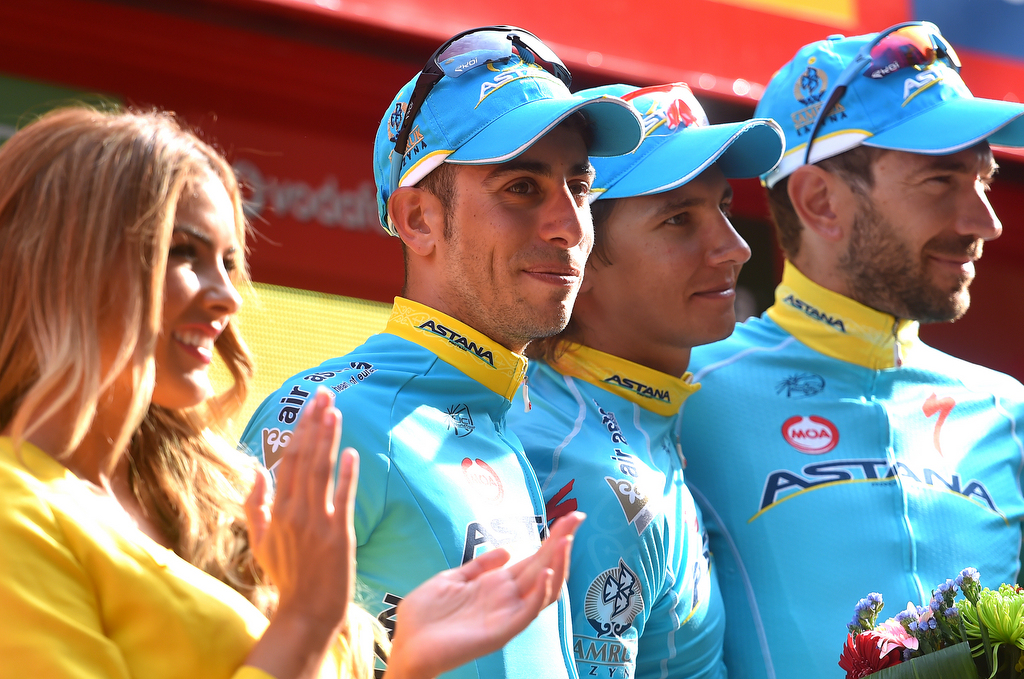
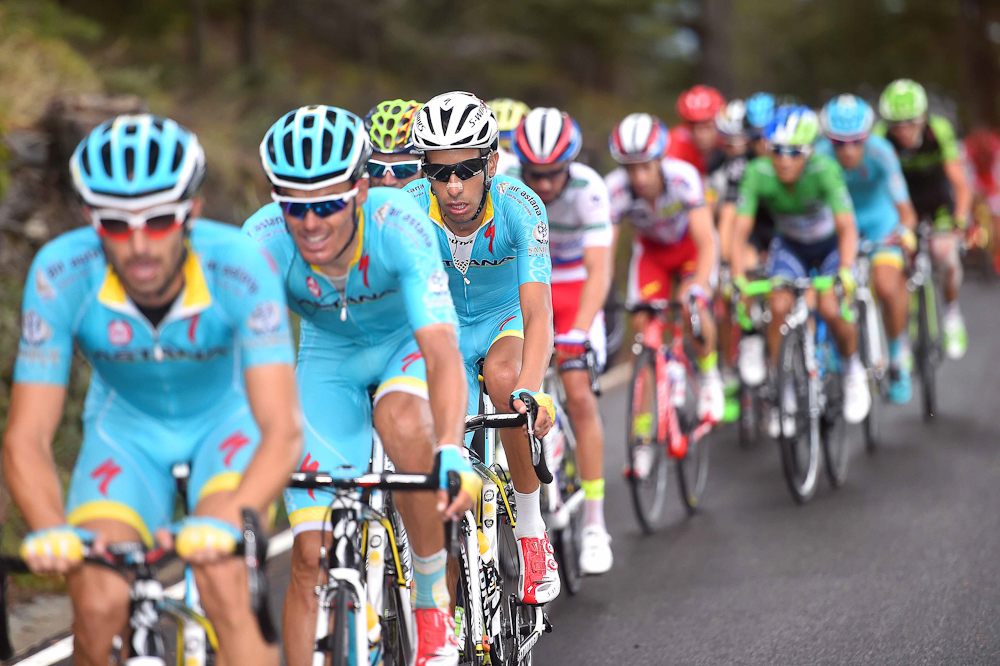

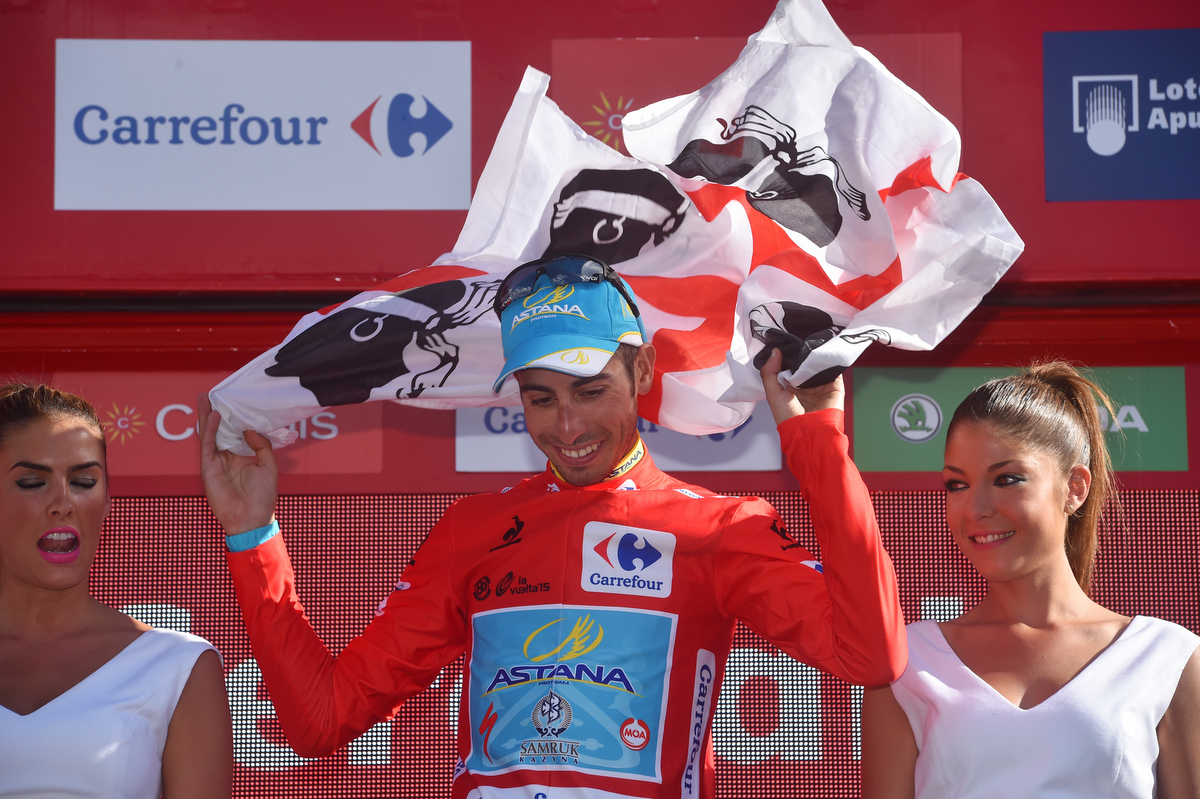
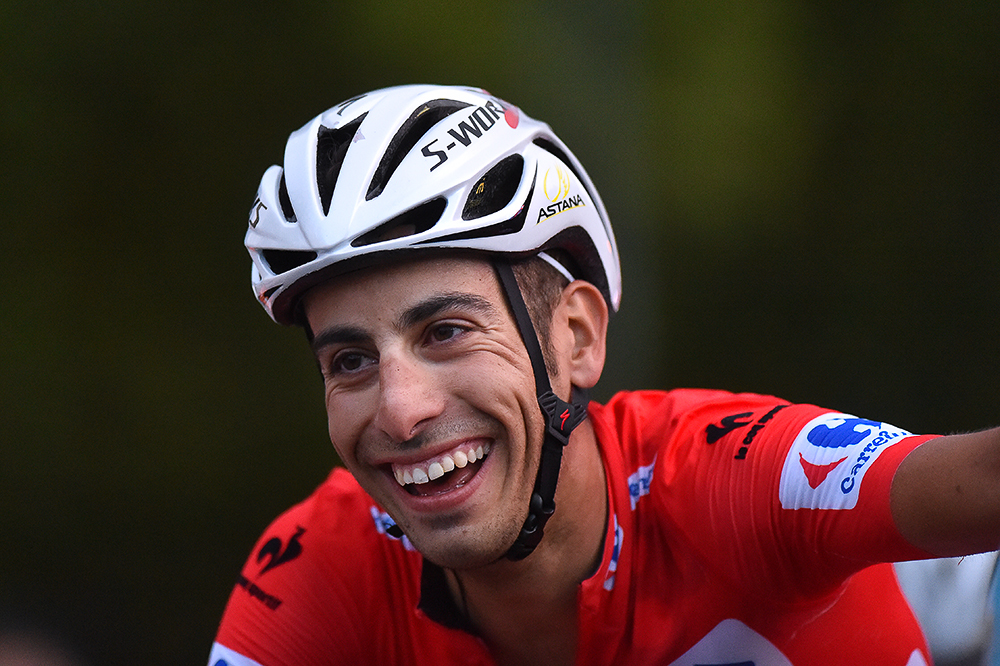
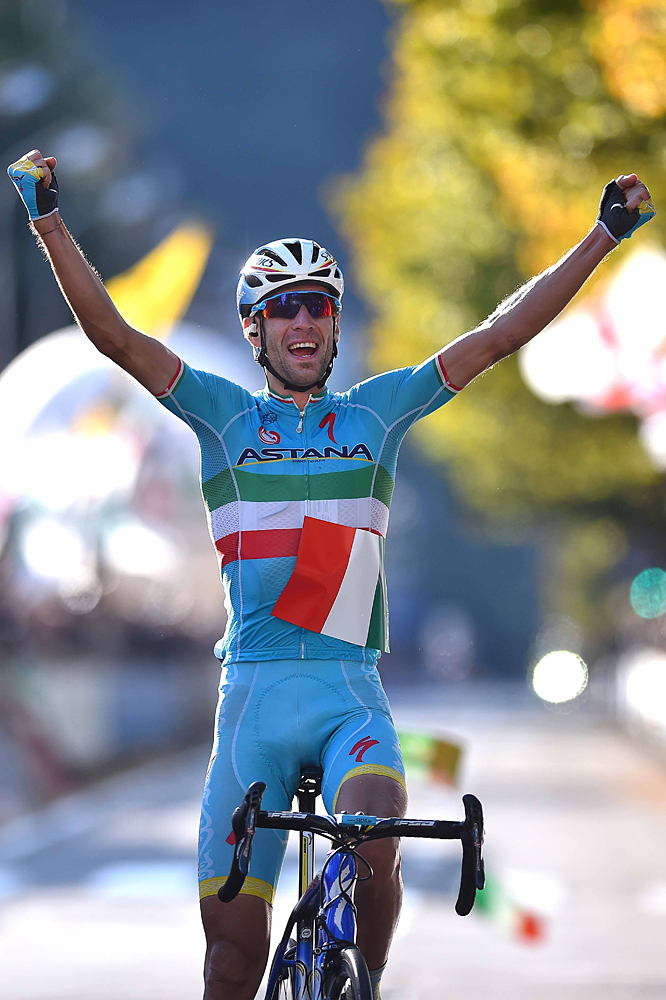
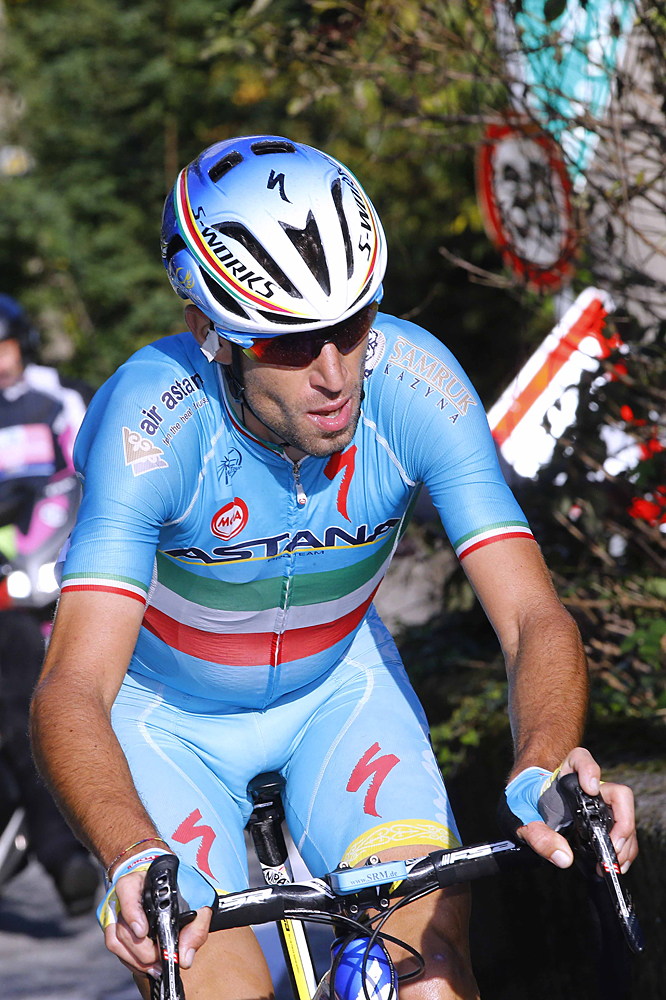
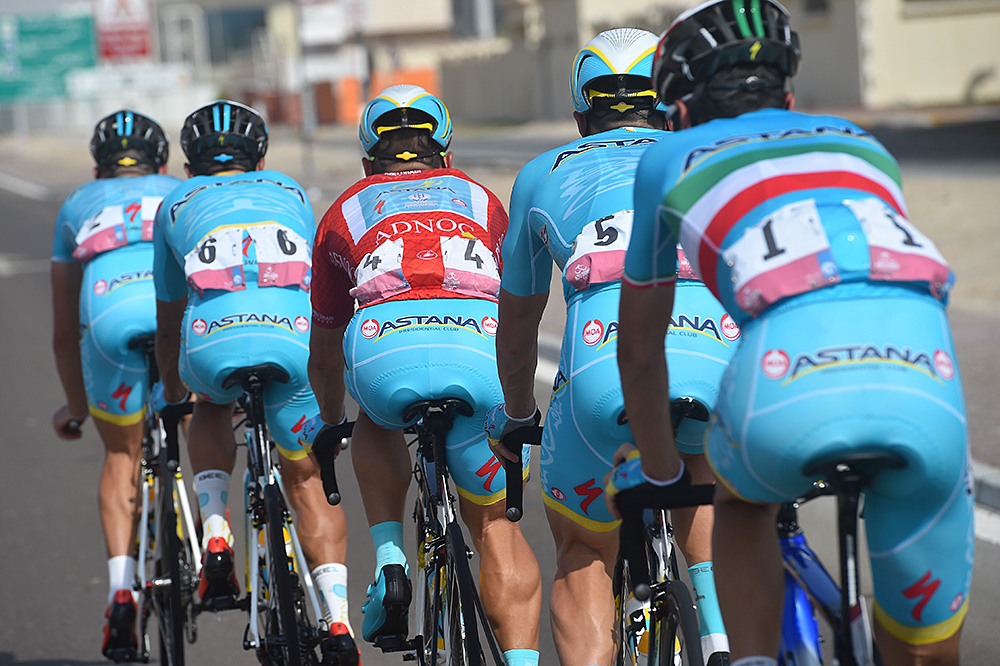
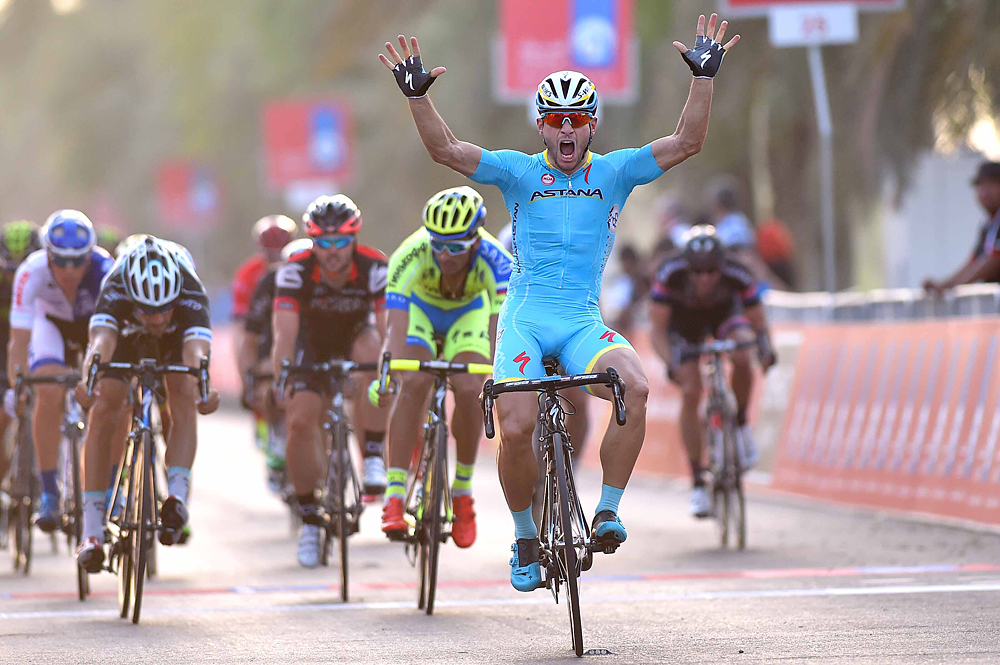
WorldTour ranking: fifth (up from tenth)
Win count: 34 (up from 24)
Top riders: Fabio Aru (fifth), Vincenzo Nibali (19th), Mikel Landa (34th), Lars Boom (45th), Jakob Fuglsang (63rd)
The Astana team began 2015 under suspicion and under fire as a consequence of the doping cases that hit the team in 2014 and the UCI’s attempt to refuse the Kazakh team a WorldTour licence. In December, UCI President Brian Cookson told Cyclingnews that Astana was “drinking in the last chance saloon” but the team managed to hold onto its licence and even ended the season with 34 victories, including Fabio Aru’s overall success at the Vuelta a Espana.
However, Astana’s road to redemption during 2015 has been littered with incidents and mishaps and is far from over. Vincenzo Nibali’s explusion from the Vuelta a Espana for holding into a team car caused further embarrassment and raised questions about the ethics of the Kazakh team. Nibali only avoided further criticism for his poor season and cheating by winning Il Lombardia. The team staff seemed to accept and satisfy the so-called 'cahier des charges' introduced by the UCI and checked by the Institute of Sport Sciences of the University of Lausanne (ISSUL) but Dmitriy Sedoun remains a directeur sportif despite being the manager of the Astana Continental team in 2014 when three riders tested positive.
Success helped cover up the cracks at Astana, as it does in so many other teams, and Astana performed well out on the road in 2015, often responding to their detractors with impressive results.
Rein Taaramäe kicked off Astana’s victory list, winning the Vuelta Ciclista a Murcia on Valentines Day. Andrea Guardini then won four stages at the Tour de Langkawi in March, helping to keep the pressure off Nibali and Aru who struggled at Tirreno-Adriatico and Paris-Nice. Lars Boom finished sixth in the Tour of Flanders and sixth at Paris-Roubaix but these results were largely overlooked as Astana's fight to save its WorldTour licence continued. Their hiring of expensive lawyers eventually proved worthwhile on April 23 when the Licence Commission decided in their favour, saying the withdrawal of their licence “would not respect the principle of proportionality”. It was an embarrassing decision for the UCI and perhaps Astana’s biggest victory of the year.
The start of the Giro d’Italia marked a turning point in Aru’s season after he pulled out of the Giro del Trentino at the last minute due to a stomach virus. He was worried it would hinder his form but Astana finished third in the opening team time trial and was immediately aggressive as they tried to crack Contador. The Spaniard crashed and hurt his shoulder on stage six but it was Aru who suffered in the rain and cold in the Apennines and lost more than two minutes and the pink jersey in the 59km to Valdobbiadene. He also suffered on the stage over the Mortirolo and was unable to take advantage of Contador’s mysterious bike change and chase, finishing a further two minutes back. Landa was arguably the stronger rider in the Astana team at this point but the team continued to back Aru.
He paid the team back for the faith by making a quick recovery and winning the mountain stage to Cervinia. 24 hours later he did it again on Sestriere – where he often trains at altitude. Contador faltered on the dirt roads of the Colle delle Finestre and lost two minutes but held on to win in Milan ahead of Aru and Landa. Astana jerseys surrounded Contador’s pink jersey but they were unable to topple him.
Get The Leadout Newsletter
The latest race content, interviews, features, reviews and expert buying guides, direct to your inbox!
Tour de France troubles
The Tour de France should have been Nibali’s moment, with Aru’s performance giving him plenty of motivation to show who is the leader at Astana. However his race as defending Tour champion started off badly when pre-race MPCC tests revealed that Boom had a low cortisol level. Vinokourov decided to ignore the MPCC rules and let Boom race but the team’s image and moral suffered another blow. Nibali was then left isolated in the echelons on stage two, losing 1:28. He lost further seconds on the finish on the Mur de Bretagne before cracking big time on the first mountain finish to Pierre Saint Martin as Froome took control of the race.
Nibali tried to fight back in the Alps and won stage 19 to La Toussuire but came under fire after apparently attacking Froome while he was suffering a mechanical problem. Nibali denied any wrongdoing and his win lifted him to fourth overall but the subsequent spat marked the end of the sportingly relationship between the two.
Aru said he was sorry to lose his teammate but was quietly happy to have total team leadership. He performed well on the early mountain stages and then confirmed he was a real contender for victory on the terrible stage in Andorra. Landa ignored team orders and won alone but Aru gained time on all his rivals and pulled on the red leader’s jersey. He lost it to Tom Dumoulin in the Burgos time trial but only by three seconds and took it back on stage 20 to Cercedilla, as the Dutchman cracked. He rode into Madrid to win his first Grand Tour ahead of Joaquim Rodriguez (Katusha) and Rafal Majka (Tinkoff-Saxo).
Aru’s success seemed to give Nibali extra motivation to bounce back from his embarrassing disqualification. He trained quietly at home in Messina during the Vuelta but then hit back in the Italian one-day races. He won Coppa Bernocchi with an aggressive attack and then did it again a week later at Tre Valli Varesine to secure his place in the Italian team for the world championships. Italy came home empty handed as Peter Sagan strutted his stuff but Nibali was still riding on anger and dominated Il Lombardia to end the Italian drought in the Classics. Astana started the season unsure of its future and ended it with a winning streak that lifted them to fifth in the WorldTour rankings. Further victories by Guardini in Abu Dhabi – his eighth of the season -and by the hard-working Andrey Zeits in the Tour of Hainan were icing on the end of season cake.
A change of guard
What to expect in 2016:
While other teams struggle to find sponsorship, the Astana team rolls on like a juggernaut thanks to backing from Kazakhstan and several of its biggest state and private companies. Vinokourov is considered a national hero at home, despite his ban for blood doping and the team’s future is secure until at least the end of 2017. The Astana team’s 30-rider roster is largely unchanged for 2016, with Jakob Fuglsang, Boom, Luis Leon Sanchez, Michele Scarponi and Guardini all staying for another season. The core of experienced domestiques also remain with only Landa, Taaramae and Borut Bozic moving on.
All of those factors are expected to lead to a gradual change of leadership at Astana, with Aru becoming top dog during the season and then especially in 2017. Nibali has his destiny in his own hands. Victory at the Giro d’Italia could lead to a new contract at Astana or help create a new team, perhaps with new Italian sponsors. But it will also mark the start of the final years of his career. Astana knows that Aru represents the future.
Best signing:
Astana has only added Eros Capecchi and Latvian Gatis Smukulis for 2016, with the team’s core of experienced riders and domestiques again expected to work for Nibali and Aru in the Grand Tours and then pick off minor success whenever possible.
Capecchi was considered a future Grand Tour contender when he first turned professional in 2006 with Liquigas but his career has stuttered in recent years and he was let go by Movistar. He is expected to boost Nibali’s group of riders and so ride the Giro d’Italia. Smukulis joins Astana after four seasons at Katusha and will help bolster the list of domestiques.
Biggest loss:
The departure of Mikel Landa was inevitable after he was ordered to work for Aru in the Giro d’Italia. While it is true he emerged from nowhere to be a Grand Tour contender, he was the best climber in the Giro, even dropping and beating Contador on the stage to Aprica, while Aru suffered. Yet Astana refused to change leaders and were ready to lose with Aru than try to win with Landa.
The Basque rider opted to join Team Sky for 2016 and has already been named as team leader for the Giro d’Italia. He will no doubt be Nibali’s biggest rival next May. The way Astana treated him this year will surely give him extra motivation in 2016.
Man to watch:
Diego Rosa is one of Aru’s inner circle and key domestiques but showed he can win races too by dominating Milano-Torino. He could be Aru’s understudy and last teammate in the mountains in 2016 and so have further opportunities for personal glory in other races.
Alexey Lutsenko was the 2012 under 23 world champion and showed is pedigree by winning a stage at the Tour de Suisse this season. Being from Kazakhstan earns him special status in the team and his power and speed could make him a future Classics contender.
Miguel Ángel López won the 2014 Tour de l’Avenir and showed his talented during his debut professional season in a limited, 34-day race programme. The Colombian is only 21 but won a stage at the Vuelta a Burgos and was seventh in the Tour de Suisse. Riding with Aru or Nibali in 2016 will help him learn for his own Grand Tour career.

Stephen is one of the most experienced member of the Cyclingnews team, having reported on professional cycling since 1994. He has been Head of News at Cyclingnews since 2022, before which he held the position of European editor since 2012 and previously worked for Reuters, Shift Active Media, and CyclingWeekly, among other publications.